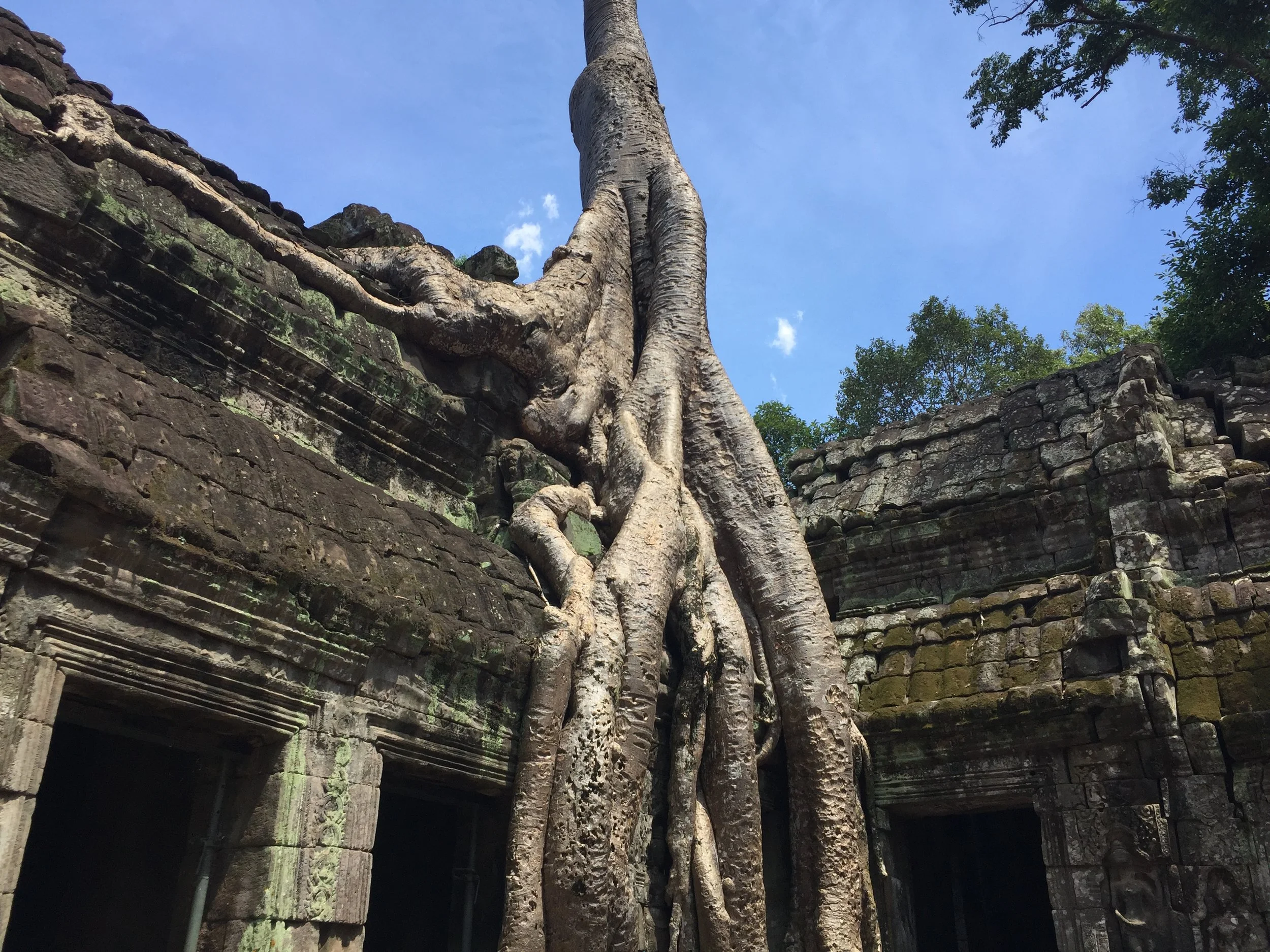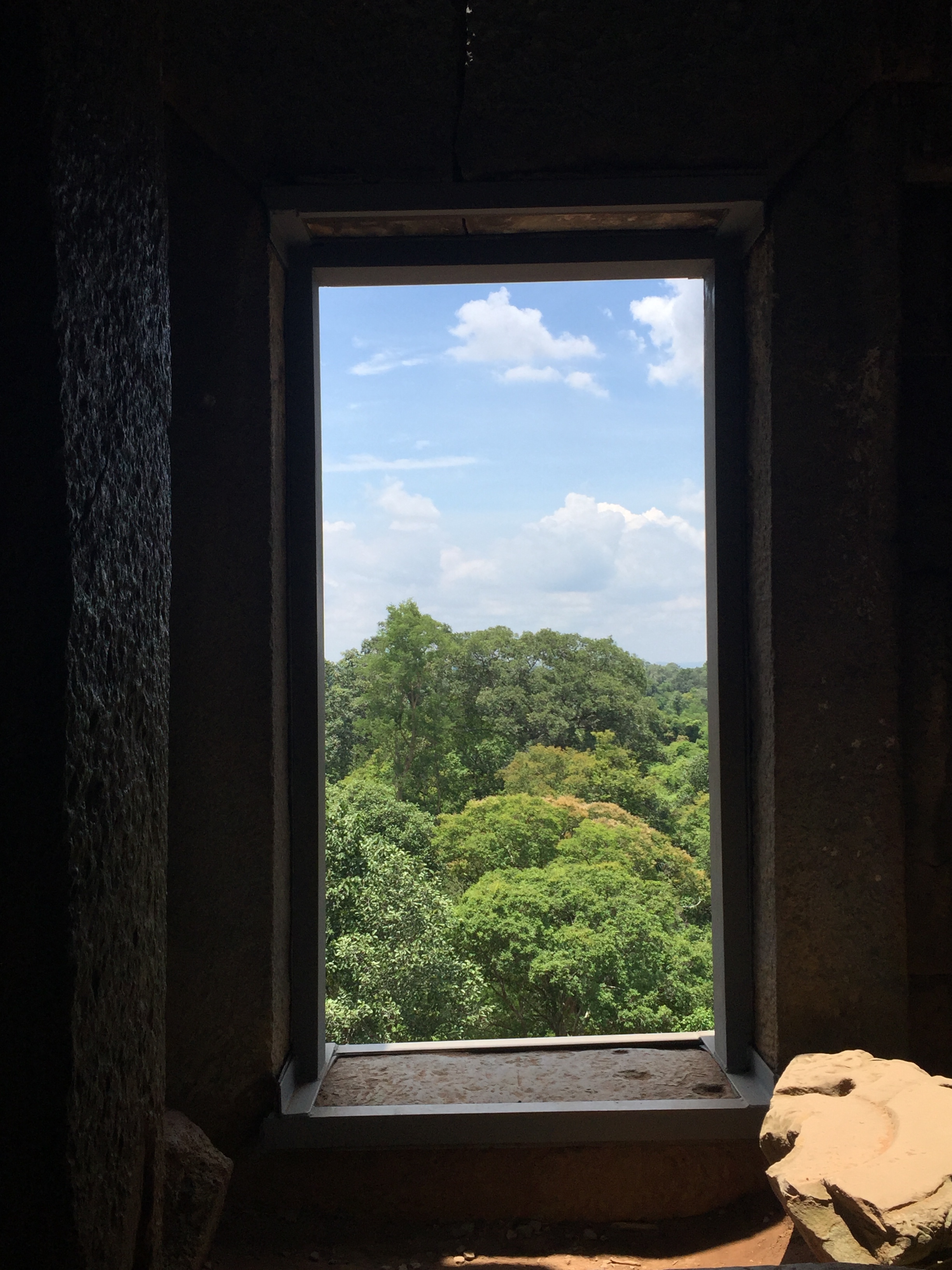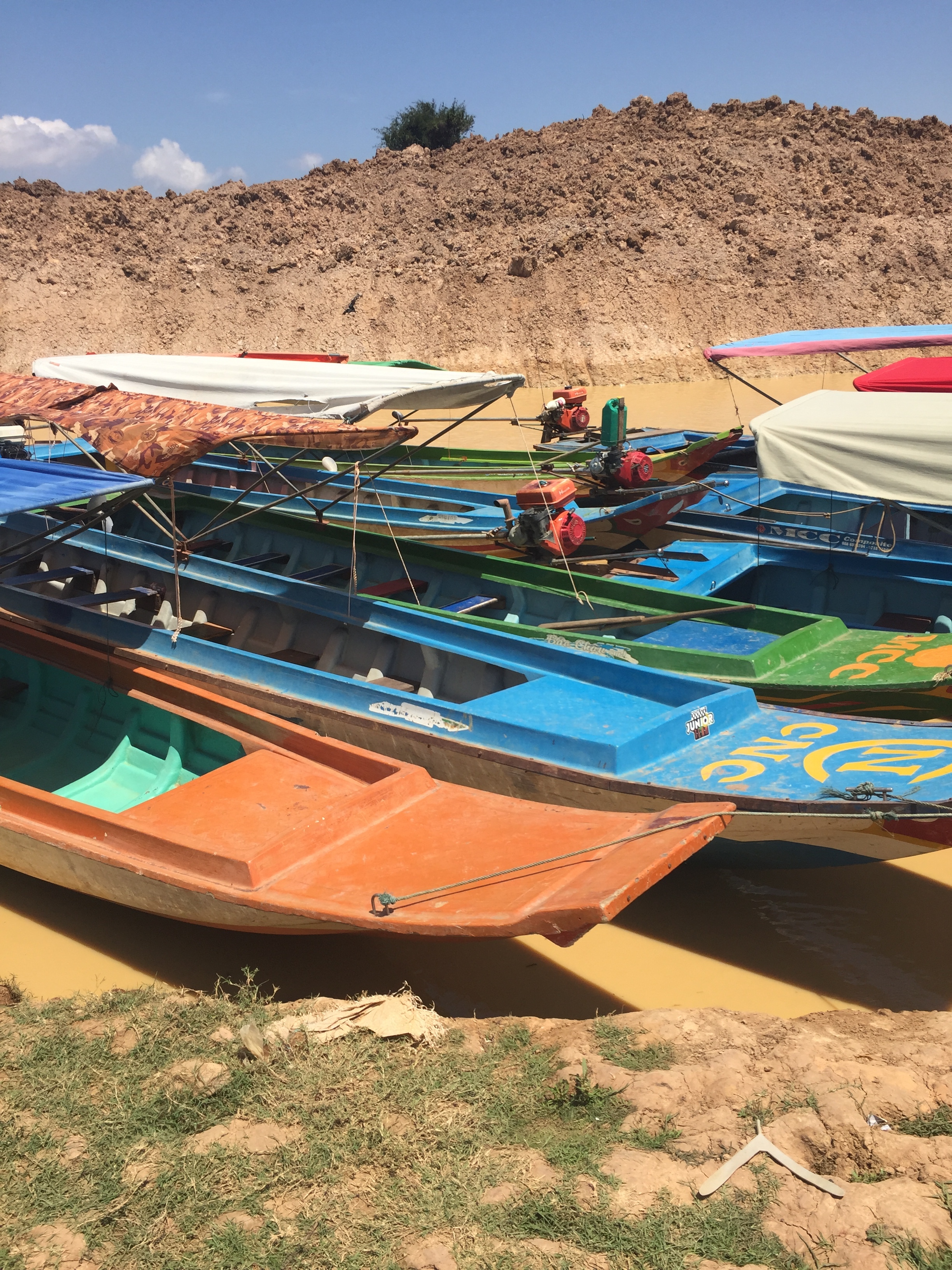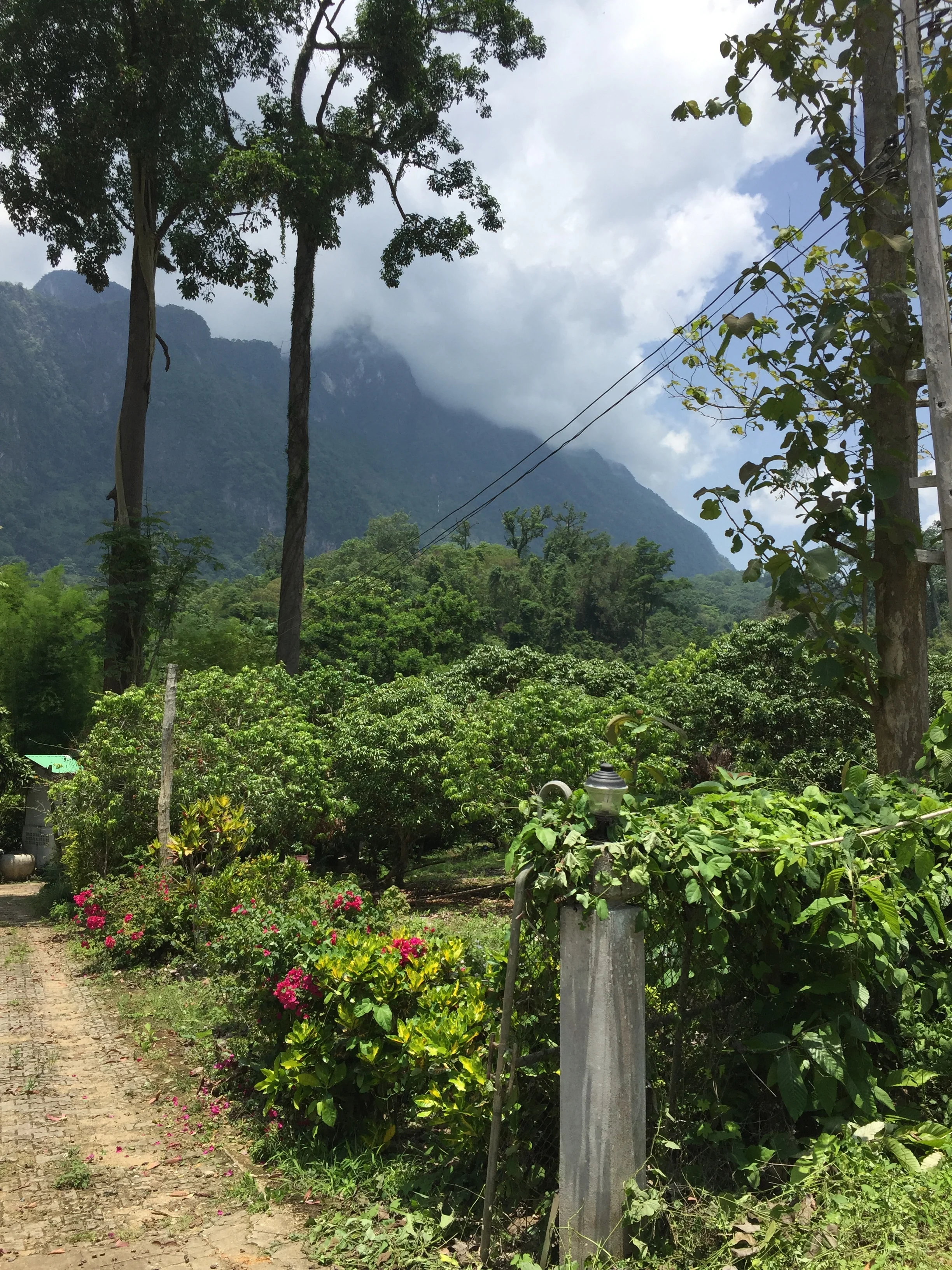Angkor Wat: Simply Remarkable
We went to Cambodia for Angkor Wat. Deemed the 7th Wonder of the World, the UNESCO site has unparalleled architectural preservation. Furthermore, the complex is considered by many as the largest religious monument in the world.
Angkor Wat was the center of the Khmer Empire, which once ruled over most of Southeast Asia. This civilization ultimately went obsolete, but left behind a remarkable legacy with hundreds of temples, spanning from the 9th to 15th century.
There's plenty to discover, so we left early in the morning. It's located slightly over three miles north of Siem Reap. We took a tuk tuk. In fact, our tuk tuk driver was our only driver for our entire stay in Siem Reap, including airport transport and the floating village. Travelers in Southeast Asia tend to be very loyal to their tuk tuk drivers.
When I visited Angkor in 2011, we rented bicycles to pedal to each temple. I enjoyed taking a tuk tuk infinitely far better. Tackling Angkor can be draining for a couple reasons: It's overwhelming to comprehend the construction, but also, the heat. The sun is no joke. Our tuk tuk driver dropped us off at prearranged temples and never rushed us.
We visited what's referred to as the small group of temples: Angkor Wat, Bayon in Angkor Thom, Ta Keo, and Ta Phrom.
Before entering, you're reminded it's a religious site and to be respectful. Women must cover their legs and shoulders. Enforcement has become increasingly strict in recent years and tourists wearing clothes deemed inappropriate are no longer allowed to purchase a ticket. If you don't come prepared, there are ample stalls right outside selling sarongs.
Contrary to common misconceptions, the Temple of Angkor Wat is part of a cluster of temples. It's reputation is warranted, as it's the largest monument in the complex and lauded for it's conservation effort.
It's massive, and truly mind boggling to think about how such a vastly intricate monument could be constructed without technology.
The complex is 154 square miles, to put things in perspective here.
Will has a general appreciation for architecture. And I appreciate his fascination.
When walking down the street, at home or abroad, he'll stop to stare at buildings. He'll guess the time period it was constructed, the influences, and set a reminder to look it up later. So, this was the ultimate.
Even with a very limited knowledge of archeology, we recognized how ancient this was. We did have to remind ourselves we were walking on stones that have seen thousands upon thousands of years.
Since we are by no means archeological connoisseurs, we enjoyed the temples without a guide. Honestly, I think I would have burned out with a guided tour. I preferred to explore on our own accord, at our own pace.
We'd look up general information beforehand, then dive in.
Angkor Wat was originally built for the Khmer Empire as a Hindu temple for the god Vishnu in the first half of the 12th century. It took an estimated 30 years to build. Ultimately, the monument became a buddhist temple by the end of the 12th century.
After 1432, when the capital moved to Phnom Penh, Buddhist monks then tended to Angkor Wat.
The complex continues to serve as a Buddhist place of worship today.
Angkor Wat is a combination of two types of Khmer temple architecture: the temple-mountain and the galleried temple. The monument symbolizes the universe in stone.
The central tower rises from the middle of the monument as the mythical mountain, Meru, situated at the core of the universe. Its five towers represent the peaks of Meru. The outer wall portrays the mountains at the edge of the world.
Given the temple's east-west orientation, the construction indicates that there is a solstice significance.
The smooth stones were laid without mortar. Rather, the blocks were held together by mortise and tenon joints, but largely rely on gravity. The blocks were presumably put in place with the help of elephants, pulleys, and bamboo scaffolding.
It's a lot to process. And there's no denying that Cambodia is hot. Traversing Angkor Wat first felt particularly sweltering. I'd stop for an occasional pineapple, from stands just outside.
After Angkor, we drove to the Bayon Temple of Angkor Thom. The short ride felt like a bit of reprieve from the heat, while we were still able to appreciate some detailed stone carvings along the way.
The 12th-century Bayon is in the center of Angkor Thom. It embodies the creativity of Cambodia’s most renowned king, Jayavarman VII.
The Gothic towers are decorated with 216 colossal faces of Avalokiteshvara, and embellished with more than 11,000 figures.
The layout is considered a political statement representing the change from Hinduism to Mahayana Buddhism. The visages, or heads, emanate power.
The temple looks unassuming from a distance, but as you ascend to the third level, it truly feels you're transported to another time. Another world.
Bayon was our favorite temple for a number of reasons.
Primarily, it wasn't overrun with people.
We felt we had more freedom to explore the nooks and crannies.
Next was Ta Keo. At this point in the day, the sun was beating, and the steps were steep.
It could have been heat exhaustion, but we didn't enjoy this temple as much.
Built by Jayavarman V, it was the first Angkorian monument constructed entirely of sandstone. The peak of the central tower, which is surrounded by four lower towers, is nearly 165 ft. tall. However, the temple was never finished.
Lastly, we visited Ta Prohm. We would have loved this more, if it wasn't invaded with tourists. It's incredible, truly. But tough to navigate with all of the people.
Today, the temple dubbed the "Tomb Raider Temple" since the movie was filmed at the monument.
Ta Prohm is has been overtaken by the vast root systems of the jungle.
It was certainly the atmospheric temple we visited.
Ta Prohm is one of the more iconic temples and we did enjoy navigating piles of bricks and tangled tree trunks and roots.
When visiting Angkor, there are two critical factors: first have a game plan and second is to acknowledge you're not going to see everything. You're not even going to see a fraction.
Fortunately, it's easy to appreciate what you do see. Because it's awe-inspiring.
Personally, I was most impressed by the scale. Pictures in this case just can't capture the sprawl of the ruins.
Some temples certainly stood out over others. We had favorites. And honestly, you do get jaded as you carry on. But the grandiose entrances and seemingly hidden passages remind you of how magical this place is.
















































